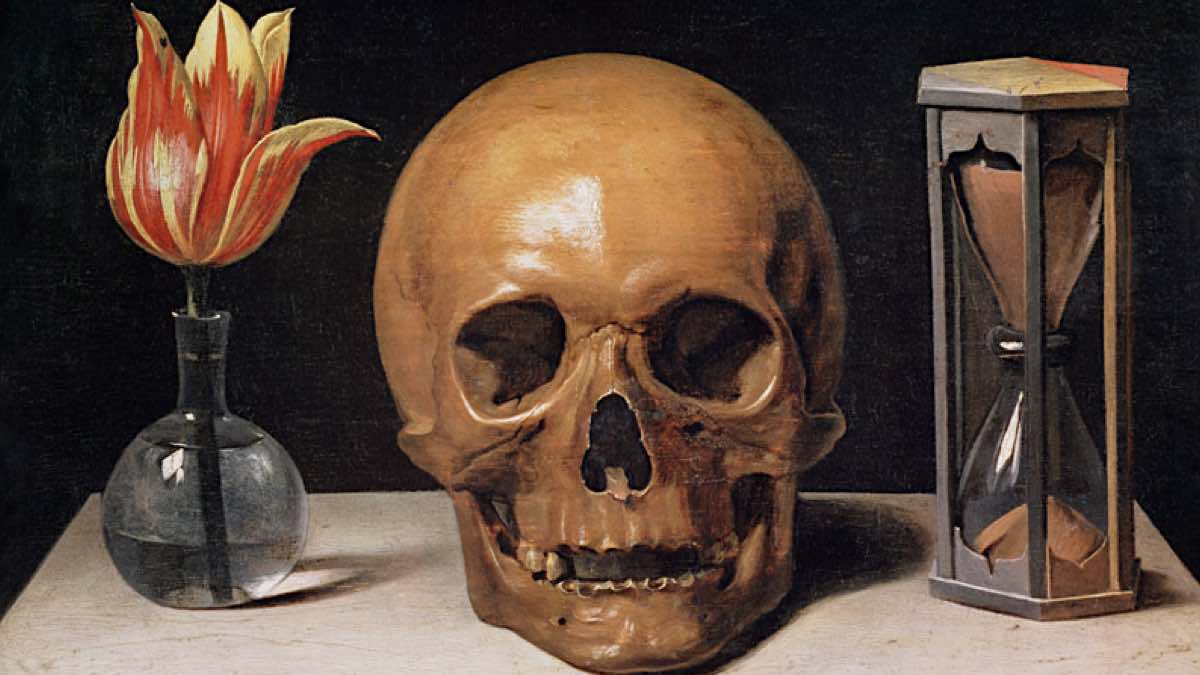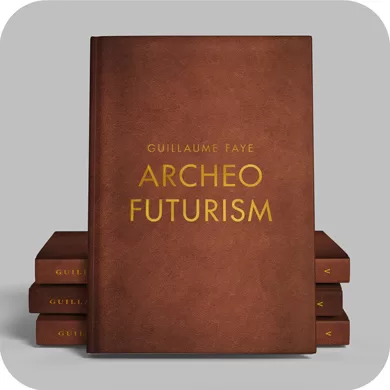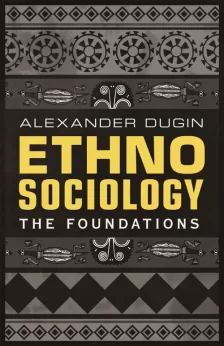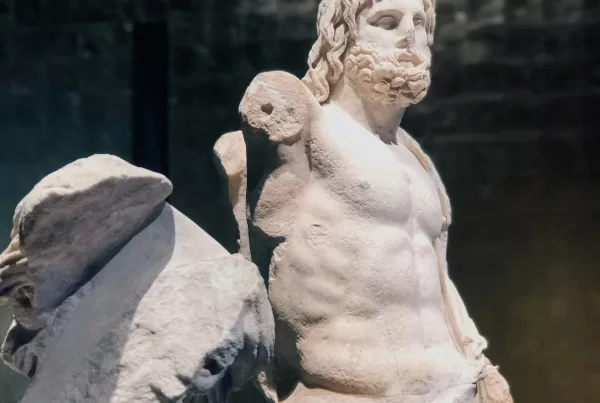“Sincerity does not only complete the self; it is the means by which all things are completed. As the self is completed, there is human-heartedness; as things are completed, there is wisdom. This is the virtue of one’s character, and the Way of joining the internal and external. Thus, when we use this, everything is correct.”
– Tsunetomo Yamamoto, Hagakure
Sadly remembered now as little more than a relic of the Victorian era, there is the beautiful old Latin phrase, “memento mori,” or “do not forget death.” It is usually used to refer to something symbolic of death, such as a skull, or perhaps a woven lock of hair. The philosopher Democritus steeled himself by going into solitude and frequenting tombs. In Plato’s Phaedo, in which he recounts the death of Socrates, he suggests that the proper practice of philosophy is “about nothing else but dying and being dead.” Yet another meaning can be derived from Psalm 90, verse 12 of the Old Testament, which says, “So teach us to number our days, that we may apply our hearts unto wisdom.” Moses’ prayer to God was that if man knew how short his life was and that death would come in a moment, he would learn to fear God’s wrath, refrain from thoughtless behavior, and become wise enough to serve God properly, and so admonish man not to forget death. The gist of this prayer can be crystallized in the short death commandment, memento mori. This admonishment, by the way, seems to have a far deeper meaning for us today than the one contained in the above-mentioned psalm. For today’s so-called “nuclear age” is literally the “age of death,” and we cannot “number our days,” and, in the extreme, we cannot even expect to survive until tomorrow.
We are constantly threatened by death without being reminded of it. “As soon as man, or any other living being, begins to live on earth, there is nothing that is not threatened with death. All the philosophies fermented among us, whether they take the form of beliefs, ideas or demonstrations, are merely reactions of the human mind to death,” wrote Takeo Arishima in his philosophical essay “Fate and Man.” But then, have we really acquired wisdom through this threat of death, and has this threat given us a mind of wisdom? No, today’s human beings are far from accepting the warning of death obediently, but on the contrary, they are frantically trying to somehow forget this warning and escape from any thought or threat of death, whether imagined or valid. They are eager to rescind the threat of the warning. For example, the daily talk radio broadcasts, which force us to laugh at the most ridiculous and common entertainment programs, and popular songs and films, which are not worthy of the name of art, are all designed to compete for temporary pleasure, making us forget death and enjoy what constitutes modern life, even if only for a moment. It must be said that the modern man’s motto is “forget death,” as opposed to the traditional “memento mori.” It can be said that authoritarianism thrives on people’s inability to accept death.
The trend towards the liberation of life that began during the Western literary revival has not only resulted in the blossoming of gorgeous art and literature in the early modern period. It also encouraged the development of science and technology for the free enjoyment and expansion of life, and finally brought about the present age of science and technology. There is no doubt that science and technology initially had a mission to serve life. The result of reflecting on this relationship from the standpoint of life is nothing other than the utilitarian epistemology of philosophy as an awareness of science. Moreover, philosophy did not stop at this criticism of science, but expanded itself to universal awareness of life by making culture the object of its criticism in general. This is the so-called “philosophy of life” that was popular from the end of the nineteenth century to the beginning of the twentieth century. It is not limited to those who claim this name. The so-called idealistic philosophies that are generally accepted are also “philosophies of life” insofar as they regard the realization of the ideal essence inherent in human beings as the satisfaction of life, and claim that service to something beyond life and beyond death is also for the sake of life. Even if we consider that something transcends the other shore of life, so long as it is directed and demanded from the other shore of life, it is still an idea established on the basis of the demands of life. Thus, there is no proof that it is truly transcendent. The fact that most major religions advocate a position of transcendence over life, but in fact do not transcend life, is proof of this. If we worship the divine for the welfare of man, we are not serving the transcendent; on the contrary, we are making the transcendent serve life, as it were.
However, the worldview from the standpoint of life, or what should be broadly called the “philosophy of life,” has been betrayed by the cultural products of this standpoint, above all by science and technology, which is regarded as the representative of this standpoint in the present age, and is now trapped in a terrible self-contradictory situation. This is what can be called a crisis, the anxiety of our time. As a result, life, which had been recognized as a principle of value, has now been overturned on its very foundation and has fallen into nihilism, giving way to its opposing force, death. Can human beings remain in nihilism for long? No, for it is nothing but a contradiction to life, so it is not a place where life can maintain itself. There, life is only tormented by an inescapable anxiety and tossed about by the threat of death. It is the result of despair at the emptiness of life that we are tempted to die even as we are threatened by the omnipresent power of death. The modern-day suicide epidemic is nothing but a symptom of this. In America, especially, young men of European and East Asian ancestry seem to be driven to suicide by a culture that denies their very status as human beings. To use Osamu Dazai’s infamous phrase, they are “no longer human,” and their lives are considered to be worthy of only shame by the dominant American media. But suicide is, of course, the defeat of life and the triumph of death, and cannot possibly be a breakthrough in the self-contradiction of life. It is clear that it is an escape from life, but not a fulfillment through life. In order to survive without giving in to the suicidal temptation, we must take another course.
What, then, is this other way? We are driven into the self-contradiction of life because we pursue the direct enjoyment of life without reflection, without introspection, and as a result, we lose the awareness that life is always bound up with death, and that at any moment, the two sides of life and death will turn upside down, and death will appear on the front and life will be driven out on the back. In other words, it is the result of forgetting death, contrary to the beautiful and timeless admonition of “memento mori.” We are now once again trapped in a situation where we must follow and fulfill the commandment of “do not forget death.” But then, is this admonishment actually feasible? And even if it were, would it result in a mind of wisdom, as the Psalmist says? What is the basis and reason for this? It is fair to say that modern man, faced with the collapse of the “philosophy of life,” is now faced with the fate of having to reexamine the issue of the “philosophy of death.” The “age of death” naturally demands a “philosophy of death.” Originally, Western philosophy, in accordance with its historical origin and developmental path, belonged to the “philosophy of life.” If we see that the direct driving force that has driven it to its self-contradictory collapse today is none other than science and technology, there is no need to explain this. If, on the other hand, a “philosophy of death” is to be imposed on mankind as a task from the present to the future, there is no better guide than Zen enlightenment. This is one of the reasons why interest in Zen is on the rise in the West today, and why there is such an extraordinary devotion to it, especially among outstanding philosophers and artists. One need look no further than the Hagakure. Written by Tsunetomo Yamamoto, a samurai who later became a Zen Buddhist priest, we see such striking admonishments as, “Rehearse your death every morning and night. Only when you constantly live as though already a corpse (jōjū shinimi) will you be able to find freedom in the martial Way, and fulfill your duties without fault throughout your life.” In another of Yamamoto’s prescient teachings, we see, “When we calmly think of death morning and evening and are in despair, we are able to gain freedom in the way of the samurai. Only then can we fulfil our duty without making mistakes in life.”
In The Way of the Samurai, Yukio Mishima’s commentary on the Hagakure, this is summed up with peculiar elegance: “Every day one should consider themselves dead. This is the substance of the way of the samurai.” I would like to introduce a Zen kōan as a guide for those who wish to devote themselves to the same task, and to interpret it from the standpoint of a guide to the “philosophy of death,” rather than from the standpoint of Zen Buddhism.
***
This is Tang Dynasty Zen kōan. When a young monk, who was absorbed in the issue of life and death, followed his master Dōgen in mourning the loss of a relative, he tapped on the coffin and asked his sensei whether it signified life or death. The master, however, simply said, “Neither life nor death.” Still, the young monk must have been troubled by the contradictory dichotomy that if he was alive, there was no need to offer condolences, and if he was dead, there was no need to offer condolences, so he once again asked Dōgen. However, Dōgen did not give a clear answer. So, on his way back to the temple, the young monk asked Dōgen once again, adding, “If you don’t answer me, I will strike you.” Dōgen still did not give an answer, so the monk finally struck him. Dōgen later passed away, and when the monk told his senior apprentice about what had happened, the apprentice, too, could only say that it was neither. He realized that, although life and death are mutually incompatible, they cannot be judged as life or death according to the law of contradiction, and that the question is meaningful only to those who are aware of the inseparable linkage between the two. Dōgen’s refusal to answer his question was a mercy to make him realize this truth, and since that mercy was now working in him, he became aware that Dōgen would be resurrected and live within him regardless of his death, and he embarked on a work of repentance and gratitude.
Nichiren wrote, “One must learn about death and then about other matters.” If I were to add a few notes to the aforementioned kōan from a philosophical standpoint, the essence is that both life and death belong to human consciousness and can only be realized as interrelated, which is distinct from events that occur in the external world. The Greek philosopher Epicurus taught that the fear of death is irrational: “So death, the most frightening of bad things, is nothing to us; since we exist, death is not yet present, and when death is present, then we do not exist.” If we stand outside of life and death and look at them contemplatively, and only try to distinguish “this” from “that,” we will never be able to grasp the true meaning of either. Since it is not possible to determine “this or that” as an objective fact, one has no choice but to refuse to answer, “Neither life nor death,” when asked whether it is life or death. However, if we realize that Dōgen, who came to this realization and gave up his own question because it was objectively unanswerable, and who gave the forceps of compassion to realize this, is still alive and working within us, regardless of his death, then we can demonstrate the truth of the resurrection from death. This is life after death. In general, human beings are either alive or dead. If a man willingly renounces and abandons himself at the point where life or death is at an impasse, he can maintain a tense relationship with life while dying, and in fact, he can transform death into life. This is because life and death are not inherently separate from self-awareness, but are two sides of the same coin, and are brought into circulation by desperate actions, that is, the act of death. If we cling only to life, we will be in contradiction with death. At the same time, we can escape from the self-contradiction of life through the practice of self-abandonment, which is to die willingly. Of course, it does not simply mean the knowledge that humans are endowed with the ability to die freely on their own. When we willingly put this ability to work and carry it out, we can first demonstrate the strange transformation of life and death into one and the same. It must be said that the Absolute, who transcends life and death, is the mercy that converts and unifies the antinomy, and must be merciful enough to make us realize that resurrection from death is nothing other than true life without the threat of death. Because it is the principle of negating the direct existence of life and turning it into life of death and resurrection, and thereby achieving essential life, it is called absolute love.
However, merely relying on the grace of this absolute love to effect the conversion from death to resurrection will only establish the belief in the moment of the so-called “eternal now” in each present, and will not fulfill the content of that resurrection life in any concrete, lasting way. Then, even if the anxiety of life threatened by death can be lifted, it must be said that there is nothing that actively restores the essence of life and makes it a joy to live in the midst of death and suffering. In other words, if we only die while living, there is no reason for us to live while dying. How can this difficulty be resolved?
Tsunetomo Yamamoto wrote, “If a warrior is not unattached to life and death, he will be of no use whatsoever. The saying that ‘all abilities come from one mind’ sounds as though it has to do with sentient matters, but it is in fact a matter of being unattached to life and death. With such non-attachment one can accomplish any feat.”
Even though the Absolute should be called absolute nothingness and absolute love, because the Absolute transcends relative existence, it cannot directly work on the other party as the relative and endow them with love. This is why all religions, both Eastern and Western, have an intermediary between the Absolute and sentient beings, playing the role of ancestors or prophets. It is possible to learn the general theories of science on one’s own without a teacher. However, the truth of an absolutely concrete and individual self-awareness can only be communicated between a living master and disciple who are bound by encounters, and only by learning from the master what has been done practically and realizing it by oneself. Without the communication of living individual personalities, absolute truth cannot be learned or realized. Therefore, absolute love is mediated and realized through the love of a living master. The disciple who has realized the truth through the love of his master, as long as he is grateful for it, must naturally repay the truth that he has realized and give it to others, and use it as a medium for his own self-realization of the truth.
Yamamoto writes, “It is spiritless to think that you cannot attain to that which you have seen and heard the masters attain. The masters are men. You are also a man. If you think that you will be inferior in doing something, you will be on that road very soon.” Herein lies the reason why, at the same time that it takes a teacher to realize the truth ourselves, a subject who is aware of the truth unique to himself – that is, so-called existence – should form a monadological existential cooperation in response to the individual yet universal truth in order to further distribute that truth to others. Even though the self may die, the existence united by mutual love can be resurrected in an existential cooperation that transcends the life and death of the self and participates eternally through its action for the sake of charity in others, as evidenced by the existence that has received such charity. The resurrection of the dead is not an objective event that occurs directly to the deceased, but an alternate mediation situation that is indirectly realized by the living, who are united by love and who are convinced that they are acted upon by the dead. Moreover, it is through this mediation that we learn the truths bequeathed by our predecessors and, in gratitude to them, pass them on to future generations as universal and individual truths, in other words, existential cooperation. In this cooperation, individual beings die and are resurrected, and are consumed by the eternal, absolute, and immediate love, and at the same time, they themselves participate in this cooperation as mediators. It can be said that the death and resurrection are reflected in the mirror of love between master and disciple, and they are aware of it, indirectly entering eternity and achieving immortality.
As such, life and death do not exist as objective events like natural phenomena, but rather as mediated situations that are realized by each individual existential subject. The latter is not only a phenomenon that can be expected from the former, but if we voluntarily abandon the attachment to life, death will be resurrected to life, and that will be the case between beings bound by love. Realized as an existential cooperation, it is demonstrated that the mercy of the dead pioneers works for the living, and at the same time, in order to repay their gratitude, they pass on the truth that they have come to realize to their successors and advance them. The result of this realization of the truth that is unique to him should make the life of death and resurrection without doubt an essentially joyous one. If this is the truth of the “philosophy of death,” then it is undeniable that a way out of the predicament of the “philosophy of life” can be found here.
***
Christianity has already transcended the harmonious, life-oriented, scientific worldview inherent to the Greeks, and has placed at the center of its teachings the theory of the fall of mankind handed down from the Hebrew religion of the Old Testament and the idea of death as divine punishment for that fall. Heavily influenced by Tolstoy, the philosopher and novelist Takeo Arishima wrote, “Man, unless he confronts death, cannot know God’s existence.” The religion also preached the resurrection from the dead, advancing to the New Covenant position of practicing God’s love and love for one’s neighbor by offering oneself as a sacrifice. “But man is given the great ability to confront death,” continues Arishima. Furthermore, the gospel of Christ was embodied in his own death and his resurrection, making Christ the medium of God’s love for mankind, and the concept of resurrection from the dead became central to Christianity. The Gospel accounts of the resurrected Christ appearing directly to the disciples and women who had worshipped and adored him before his death confirm what I have already said above, that the subjective and mediating awareness of life and death, and the awareness that depends on the alternating conversion of the two into one and the same, is what turns the “philosophy of life” into the “philosophy of death.” What is this if not an endorsement of the truth of the “philosophy of death”?
However, in retrospect, the God of Christianity is essentially an absolute being, not an absolute nothingness, as has been the case since the Old Testament. It is not disputed, however, that as Christian theology was organized philosophically, and philosophical apologetics replaced mythological legends as its content, God tended to be transformed from absolute existence to absolute nothingness. However, it was only in extremely rare cases that God was thoroughly reduced to absolute nothingness, and even in such cases, God was rarely asserted to be absolute nothingness in an overt manner. This is exactly the opposite of Buddhism, especially Zen, which teaches emptiness and advocates nothingness. It is natural that Christendom, with its “philosophy of life,” would lean toward a belief in a higher form of life rather than a denial of life. The fact that the so-called existentialist philosophy, which is relatively closer to Zen in the West today, still advocates ontology, rather than the demonstration of absolute nothingness as absolute nothingness, is evidence of this. What, then, is the truth of Zen as something that provides the substance for the “philosophy of death”? In other words, it is to refrain from achieving self-satisfaction even in the attainment of truth, and to renounce anything that is directly connected with the satisfaction of life without the corroboration of death, in defiance of the precepts of death. The Bodhisattva path, which is the central conception of Mahayana Buddhism, is nothing other than this. This, I believe, is the thoroughness of absolute nothingness.
Christianity, as mentioned above, essentially stands on the position of resurrection from the dead, and tries to embody the love of God for human beings and the love of human beings for God, even to the point of alternating between the two, relying on the divine child Christ as the intermediary between the two. However, since God’s absolute existence transcends absolute nothingness and preserves existence, it is only natural that the content of his teaching should aim at the perfection of the fullness of life. Christ, the Son of God, was gradually made less and less human and more and more divine, and as the Lord Christ, he was almost raised to the status of a representative of God. However, because of this, the question of Christ’s perfection approaching that of God has become a theological conundrum. The contradiction between the two is that the Bodhisattva, who is already qualified to attain the status of a Buddha, does not limit himself to the highest point by restraining and limiting his own abilities, but instead remains lower than the Buddha and ranks among sentient beings, thereby helping them to be liberated. In contrast to the latter’s position of nothingness, the former is the complete fulfillment of life, which is the position of being. It is no coincidence that the institution by which Christian theology was organized was Aristotelian philosophy, the perfection of the biological ontology in Greek philosophy. It is fair to say that the “philosophy of life” tendency of Christianity was inherent in its nature.
It is clear that the Bodhisattva path, on the other hand, is a position that thoroughly realizes absolute and immediate love, and that it is only through self-denial and self-control and humility that one can live a life of love that leads to the salvation of all sentient beings. As I have just mentioned, this is characterized by the fact that, while possessing the qualifications to become a Buddha as the supreme being, one refrains from realizing them as they are, restraining one’s own creation in order to let other sentient beings create Buddha first, and finally, even when one’s own creation is directly hindered by evil acts, one does so without any thought or care, and thus, one is able to live in the world of the Buddha. In other words, they are to mediate only under the condition of self-denial and self-limitation, and to do so only under the condition of absolute non-instantaneous love of resurrection from the dead. Compared to the Aristotelian conception of God as an absolute being who is purely active and completely free from all negative obstacles, the latter is understood as the ideal limit of man as the goal of linear progression, whereas the Bodhisattva path is understood as the ideal limit of man as the goal of progression from improvement to descent, from the outward appearance to the inward appearance, and from the inward appearance to the outward appearance. The former Bodhisattva path, on the other hand, is characterized by its circular and spiraling movements, which are the result of the “philosophy of death” as opposed to the “philosophy of life.” The contrast between the “philosophy of life” and the “philosophy of death” can be very aptly expressed by this morphological metaphor. The fact that in life, things are expressions of life, while in the resurrection of death they are symbols of nothingness, also makes for a striking contrast. Philosophy in today’s “age of death” must be symbolic in a vortex-like way. While the idealism of the “philosophy of life” is linear and expressive, the “philosophy of death” should be different in form, as it is spiral and symbolic. As a result, the paradox that the “philosophy of life” is idealistic while the “philosophy of death” is realistic may be established.
Lastly, however, we must pay attention to the fact that the awareness of the resurrection from the dead is always in touch with life, and the very development and improvement of life is in fact a self-contradiction, and the inevitable tension of the contradiction leads to the realization of the inescapability of death, and the daring to die willingly. This in turn leads to resurrection, and the awareness of resurrection from the dead is opened up. This awareness is inevitably formed when one is thoroughly confronted with the contradiction in the improvement of life, and is compelled to resurrect through the tension of this contradiction. Awareness of death and resurrection arises at the point where life and death intersect and where the two are severed. If there were no mediation of the tension between the contradiction of life and the hopelessness of life, death would belong to life as a direct act of suicide, and therefore, there would be no realization of the transformation of death and resurrection. The thoroughness of life turns into death, and the daring of death breaks through to the resurrection of life, awakening mankind to the eternal wisdom of “memento mori.”
I will conclude with a brief translation excerpted from Takeo Arishima’s “Fate and Man”:
So let us live without fear. The world we live in is a world of instability, and our minds are unstable minds. The world and our hearts often slip from the foundations of stability that we have barely erected. The world and we perform all possible blunders. This ugly setback will forever dominate our lives. And this does not matter. We will live in the chaos. We are not afraid. For even in that chaos lies an unbreakable instinct for unity that will never disappear. That is enough.
We shall live. We will fight as much as we can against the aspects of death that come around us. We shall do all we can to keep our bodies healthy and sanitize them to save them from death. We will also propose all kinds of reforms to put our society on a sounder foundation and to make life safer. Let us destroy all the sting of death so that our souls may be eternal.
When we have conquered death by our own efforts, that will be the era when we have twisted the coming of death into the most barbaric prospect of all, for we know not why. It is then that one firmly shakes hands with destiny. We are, then, the arm of destiny, assisting it in its work of bringing conflict into balance.
***
If destiny is ruthless, the only way to get the better of it is for man to develop his instinctive attachment to life, to hasten his “great death,” and thereby outwit destiny. If fate is kind, the only way to shake hands with it and receive its caresses is to make it madly happy by cultivating the attachment of its instincts and hastening its “great death.” In any case, there is only one way.









